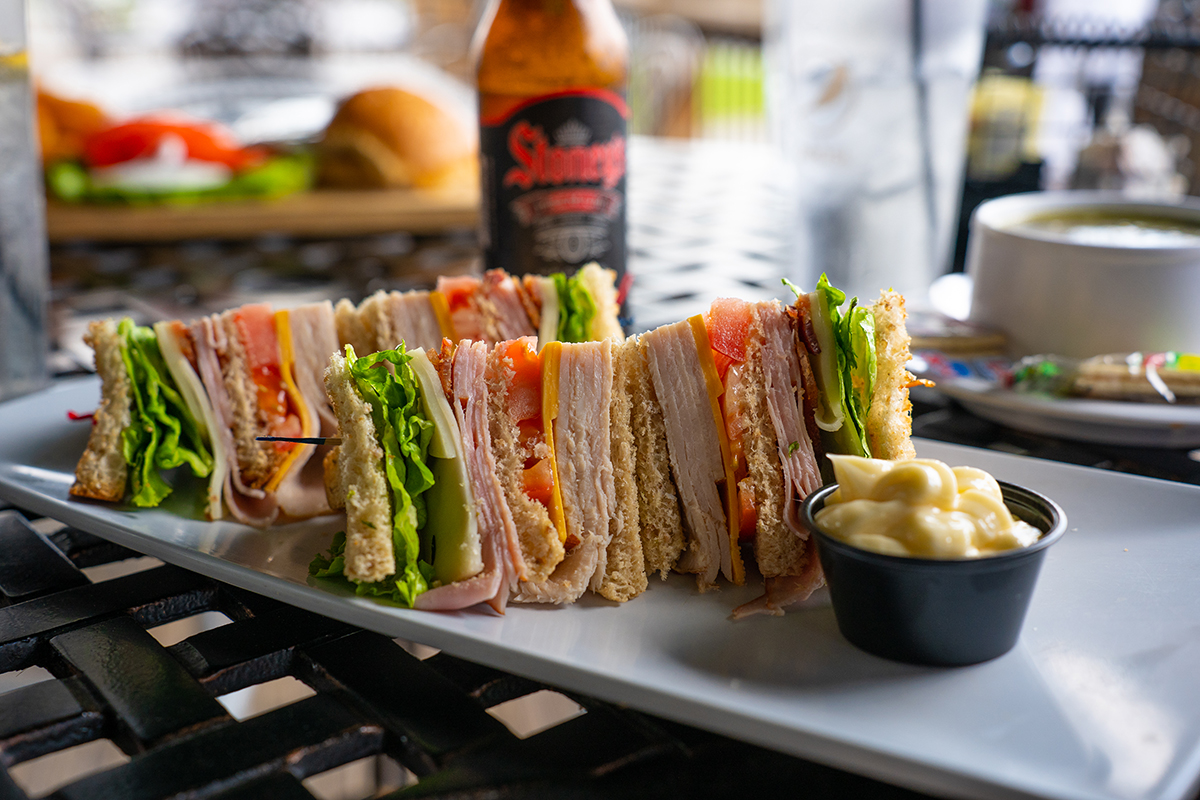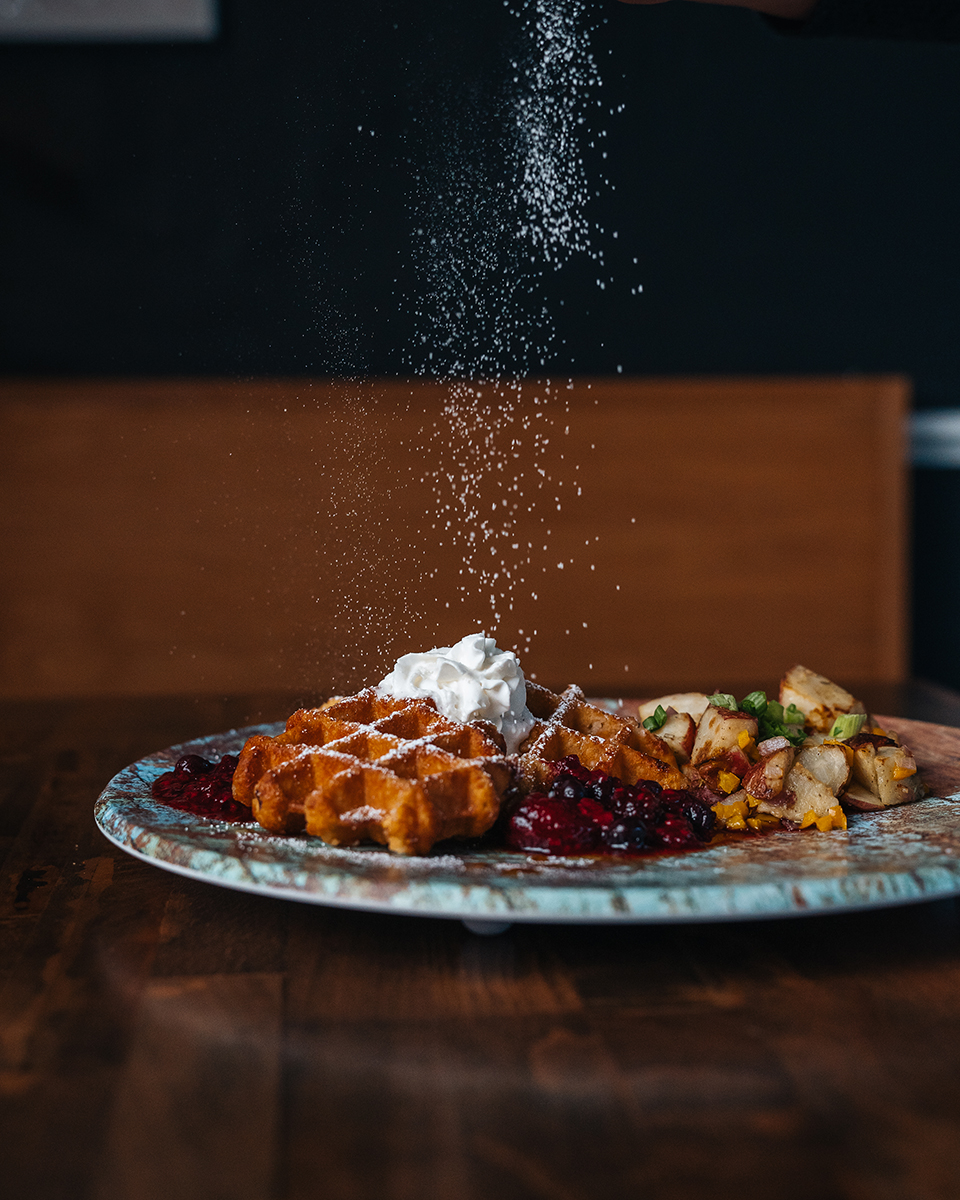By Jenn Gidman
Images by Ian Jones
Ian Jones’ Tamron 35-150mm F2-2.8 zoom ensures he’s able to capture every delectable detail in his food photos.
From pandemic boredom-busting to Pittsburgh Steeler-themed portraits, Ian Jones refuses to confine himself to one photographic lane. “Some have insisted that I should find a niche and stick with it, but I’ve always tried to be an out-of-the-box type of photographer,” he says. “For me, that means being able to take good photos in almost any kind of situation. It keeps me on my toes, which I think that translates to better pictures.”
Food photography is one genre that especially piques Ian Jones’ photography interest, stemming from his love of cooking, and eating. “When Instagram was still new, I would upload pictures from my phone of everything I ate,” he says. “Then I started watching cooking shows and preparing elaborate meals, which I also photographed. At some point, I simply worked this type of photography into my regular gigs, and clients began to notice and appreciate my work. I love shooting all of the vibrant colors in the different dishes, and the ability to manipulate my subject on the plate until I get it to look exactly the way I want.”

35-150mm (92mm), F4.5, 1/1250 sec., ISO 500
Central to Ian’s success in food photography is his newest lens of choice: the Tamron 35-150mm F/2-2.8 Di III VXD zoom for his full-frame mirrorless camera system. “This lens has been a game-changer in terms of my food photography,” he says. “Its versatility allows me to cover a broad spectrum of focal lengths without the need to constantly switch lenses, which is key in the fast-paced world of food photography, where food can fall over, wilt, or otherwise turn uncooperative very quickly. Meanwhile, the 35-150mm’s fast apertures are necessary for tricky lighting situations, and to help me to blur out the backgrounds for more environmental shots.”
IAN JONES’ PHOTOGRAPHY QUICK TIPS
Select the ideal angle.
Determining the optimal perspective for each dish is a critical aspect of capturing enticing food photos. For instance, for layered items such as burgers or a stacked sandwich, a side view effectively showcases the vertical plane of the dish, highlighting all of its components. For dishes like salads, however, which are spread out more on a horizontal plane, shooting from above provides a more visually appealing view. With the tacos you see here, for instance, if I’d shot them straight on, at table level, all you would see is the sides of the tortilla, or an incomplete view of some of the ingredients, with those colorful garnishes on top. Often, I find that shooting from a 75-degree angle is the sweet spot for food photography.

35-150mm (87mm), F4, 1/250 sec., ISO 400

35-150mm (71mm), F5, 1/640 sec., ISO 1000
Assess your goal for each photo.
When I do food shoots, I could take a few hundred pictures, and most of the images are staged, hyper-detailed ones that focus on the dishes themselves, so that the restaurants have something to show off on their websites.

35-150mm (56mm), F4.5 1/640 sec., ISO 500
Sometimes, however, when doing food photography, I want to feature more of the environment, with layers, like in the photo here of the club sandwich with the beer in the background. That kind of image reveals more about the vibe of the establishment, which sells the restaurant’s “lifestyle” and entices more people to check the place out. Those types of photos are great for social media. This is also where the wider apertures offered by the 35-150mm—and the Tamron 28-75mm F/2.8 Di III VXD G2 lens, which I also use for my food photography—come in handy, because they allow me to apply just the right amount of background blur.

28-75mm (43mm), F4.0, 1/640 sec., ISO 400
Select your focus.
Pick an aperture that ensures the main elements of a dish are sharply in focus; a common pitfall is when only a small portion of the meal is clear. This is especially true with complex dishes with multiple components based on Ian Jones’ photography experience. For instance, if you’re photographing a large burger and a piece of lettuce is sticking out from the side, you might get the piece of lettuce in sharp focus but leave the rest of the burger a blur, which isn’t ideal. It’s the burger as a whole you want to showcase, not a piece of lettuce.
Add motion.
I always carry a towel with me during food shoots, because I’m constantly drizzling ranch dressing onto chicken wings or sprinkling powdered sugar onto a freshly prepared waffle. It gets messy! If I’m shooting a series of cocktails with garnishes, chances are good that I’ll drop a blueberry or lemon slice in the water to create a splash. This simple addition creates a “wow” factor that brings a more dynamic feel to your food photos, and it serves as an effective marketing tool for my restaurant clients, because it makes the surroundings come alive.

35-150mm (45mm), F4.0, 1/3200 sec., ISO 800

35-150mm (46mm), F3.5, 1/800 sec., ISO 1000
To see more of Ian Jones’ work, check out his website and Instagram.
Is your Tamron News subscription up to date? Click to subscribe to all editions of Tamron News featuring how-to tips, new product news, contest announcements and inspiration!
